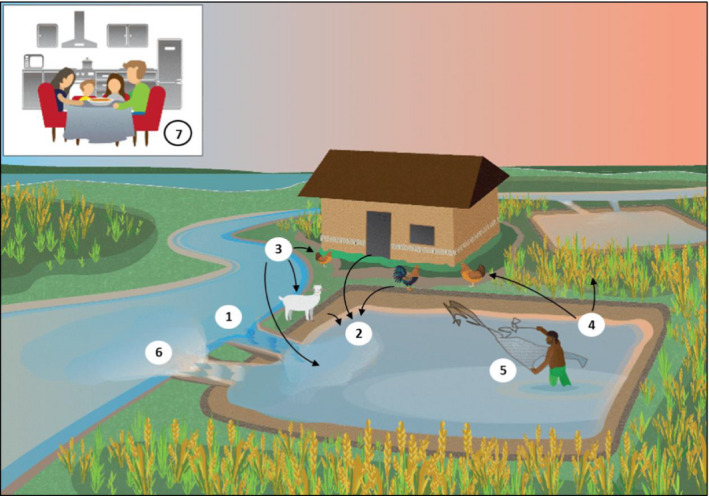Figure 4.

Ways in which shrimp farming poses a potential risk to AMR dissemination for a typical integrated small‐scale shrimp farm. 1. Fresh water is sourced from local water sources and mixed with saline water, in order to reach the desired salinity. These water supplies may be polluted with antibiotics, resistant bacteria and human/animal pathogens. 2. Human and animal waste, containing human/animal pathogens, is often used to fertilize the pond to encourage the growth of algae on which the shrimp feed. 3. Unregulated use of antibiotics, which can be added directly to the pond water and/or to the animals/humans living there. 4. Pond sediment/sludge containing antibiotics and resistant bacteria/pathogens is used as fertilizer for chicken feed and crops, both of which are eaten by the humans. 5. Humans have direct contact with pond water, sediment/sludge and shrimp/other animals. 6. Waste (water and sediment) is released directly back into local water sources, often untreated. 7. Shrimp (and associated bacteria/antibiotic residues) are transported and consumed internationally.
